Kid’s Healthy Eating Plate
The Kid’s Healthy Eating Plate is a visual guide to help educate and encourage children to eat well and keep moving. At a glance, the graphic features examples of best-choice foods to inspire the selection of healthy meals and snacks, and it emphasizes physical activity as part of the equation for staying healthy.

Building a healthy and balanced diet
Eating a variety of foods keeps our meals interesting and flavorful. It’s also the key to a healthy and balanced diet because each food has a unique mix of nutrients—both macronutrients (carbohydrate, protein, and fat) and micronutrients (vitamins and minerals). The Kid’s Healthy Eating Plate provides a blueprint to help us make the best eating choices.
Along with filling half of our plate with colorful vegetables and fruits (and choosing them as snacks), split the other half between whole grains and healthy protein:
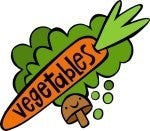
-
-
- The more veggies – and the greater the variety – the better.
- Potatoes and French fries don’t count as vegetables because of their negative impact on blood sugar.
-
More on vegetables >

-
- Eat plenty of fruits of all colors.
- Choose whole fruits or sliced fruits (rather than fruit juices; limit fruit juice to one small glass per day).
More on fruits >
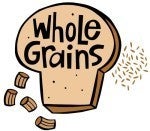
-
- Go for whole grains or foods made with minimally processed whole grains. The less processed the grains, the better.
- Whole grains—whole wheat, brown rice, quinoa, and foods made with them, such as whole-grain pasta and 100% whole-wheat bread—have a gentler effect on blood sugar and insulin than white rice, bread, pizza crust, pasta, and other refined grains.
More on whole grains >
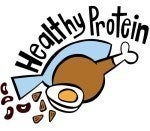
-
- Choose beans and peas, nuts, seeds, and other plant-based healthy protein options, as well as fish, eggs, and poultry.
- Limit red meat (beef, pork, lamb) and avoid processed meats (bacon, deli meats, hot dogs, sausages).
More on healthy protein >
It’s also important to remember that fat is a necessary part of our diet, and what matters most is the type of fat we eat. We should regularly choose foods with healthy unsaturated fats (such as fish, nuts, seeds, and healthy oils from plants), limit foods high in saturated fat (especially red meat), and avoid unhealthy trans fats (from partially hydrogenated oils):
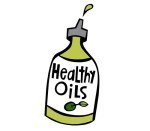
-
- Use healthy oils from plants like extra virgin olive, canola, corn, sunflower, and peanut oil in cooking, on salads and vegetables, and at the table.
- Limit butter to occasional use.
More on healthy oils and healthy fats >
Dairy foods are needed in smaller amounts than other foods on our plate:
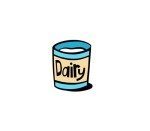
-
- Choose unflavored milk, plain yogurt, small amounts of cheese, and other unsweetened dairy foods.
- Milk and other dairy products are a convenient source of calcium and vitamin D, but the optimal intake of dairy products has yet to be determined and the research is still developing. For children consuming little or no milk, ask a doctor about possible calcium and vitamin D supplementation.
More on dairy >
Water should be the drink of choice with every meal and snack, as well as when we are active:
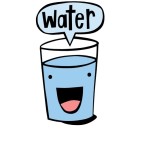
-
- Water is the best choice for quenching our thirst. It’s also sugar-free, and as easy to find as the nearest tap.
- Limit juice—which can have as much sugar as soda—to one small glass per day, and avoid sugary drinks like sodas, fruit drinks, and sports drinks, which provide a lot of calories and virtually no other nutrients. Over time, drinking sugary drinks can lead to weight gain and increase the risk of type 2 diabetes, heart disease, and other problems.
More on water and choosing healthy drinks >
Finally, just like choosing the right foods, incorporating physical activity into our day by staying active is part of the recipe for keeping healthy:
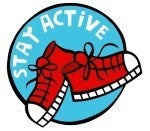
-
- Trade inactive “sit-time” for “fit-time.”
- Children and adolescents should aim for at least one hour of physical activity per day, and they don’t need fancy equipment or a gym—The Physical Activity Guidelines for Americans suggest choosing unstructured activities for children such as playing tug-of-war, or having fun using playground equipment.
More on staying active >
Overall, the main message is to focus on diet quality.
- The type of carbohydrate in the diet is more important than the amount of carbohydrate in the diet, because some sources of carbohydrate—like vegetables (other than potatoes), fruits, whole grains, and beans—are much healthier than sugar, potatoes, and foods made from white flour.
- The Kid’s Healthy Eating Plate does not include sugary drinks, sweets, and other junk foods. These are not everyday foods and should be eaten only rarely, if ever.
- The Kid’s Healthy Eating Plate encourages the use of healthy oils in place of other types of fat.
About the Kid’s Healthy Eating Plate
The Kid’s Healthy Eating Plate was created by nutrition experts at the Harvard T.H. Chan School of Public Health, based on the best available science, to enhance the visual guidance provided by the U.S. Department of Agriculture’s MyPlate icon. The Kid’s Plate reflects the same important messages as the Healthy Eating Plate, with a primary focus on diet quality, but is designed to further facilitate the teaching of healthy eating behaviors to children.
Kid’s Healthy Eating Plate Terms of Use
We authorize permission to use the image of the Kid’s Healthy Eating Plate in accordance with the following terms and conditions:
- You must include the following credit line: “Copyright © 2015 Harvard T.H. Chan School of Public Health. For more information about The Kid’s Healthy Eating Plate, please see The Nutrition Source, Department of Nutrition, Harvard T.H. Chan School of Public Health, hsph.harvard.edu/nutritionsource/kids-healthy-eating-plate.”
- Your use of The Kid’s Healthy Eating Plate is of a non-commercial nature.
- Your use of The Kid’s Healthy Eating Plate must comply with all applicable laws.
- You may not modify the image or text in any way.
- Harvard may revoke this permission at any time at its sole discretion. In the event that permission is revoked, you shall remove the image from any website or public space within no more than five business days.
- Harvard strictly forbids any indication—either explicit or implied—that suggests or might cause others to believe that Harvard, the Department of Nutrition at the Harvard T.H. Chan School of Public Health, or The Nutrition Source website has endorsed any goods, services, individual, group, or organization of any kind. Therefore, you may not use the names “Harvard,” “Department of Nutrition at the Harvard T.H. Chan School of Public Health,” or “The Nutrition Source,” or any Harvard-owned trademarks in connection with The Kid’s Healthy Eating Plate without prior approval, in writing, except for reproducing the specific credit line for the image as set forth above.
- You may not use The Kid’s Healthy Eating Plate in any manner that could harm the reputation of Harvard.
- Harvard disclaims all warranties of any kind (express, implied or otherwise) concerning The Kid’s Healthy Eating Plate, including, without limitation, any implied warranties of merchantability, fitness for a particular purpose, and non-infringement. You agree to indemnify and hold harmless Harvard University and its governing board members, officers, faculty members, students, employees and agents from and against all claims, damages, losses, liabilities, costs and expenses of every kind arising from or relating to your use of The Kid’s Healthy Eating Plate.
Terms of Use
The contents of this website are for educational purposes and are not intended to offer personal medical advice. You should seek the advice of your physician or other qualified health provider with any questions you may have regarding a medical condition. Never disregard professional medical advice or delay in seeking it because of something you have read on this website. The Nutrition Source does not recommend or endorse any products.















![Toni Kroos là ai? [ sự thật về tiểu sử đầy đủ Toni Kroos ]](https://evbn.org/wp-content/uploads/New-Project-6635-1671934592.jpg)


